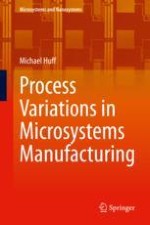2020 | OriginalPaper | Buchkapitel
10. Managing Parameter Variations in Microsystems Device Design
verfasst von : Michael Huff
Erschienen in: Process Variations in Microsystems Manufacturing
Aktivieren Sie unsere intelligente Suche, um passende Fachinhalte oder Patente zu finden.
Wählen Sie Textabschnitte aus um mit Künstlicher Intelligenz passenden Patente zu finden. powered by
Markieren Sie Textabschnitte, um KI-gestützt weitere passende Inhalte zu finden. powered by
